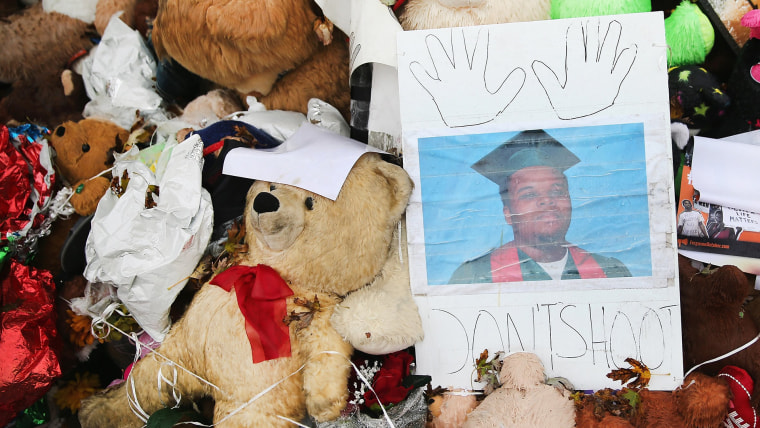Once again we are at the mercy of our careening criminal justice system. Remember waiting for the Rodney King decision? More recently we’ve done the pins and needles drill for the Zimmerman decision, and the Dunn decision. In these contemporary times, awaiting a decision from a court, or a jury, has become a regular occurrence. In the twenty-first century, it’s as though we wait on justice.
On the brink of the decision from the grand jury, we are once again, waiting. For several weeks, we've been hungry for a decision from the St. Louis County grand jury reviewing evidence in the shooting death of Michael Brown.
Law enforcement and the business community are taking steps to prepare themselves for what they anticipate will be an eruption of unrest in response to the decision, because there are only two options (although there are a few outcomes possible if there is an indictment).
Option 1: the grand jury will come back with a decision NOT to indict Officer Darren Wilson.
Option 2: the grand jury will come back with a decision to indict Officer Darren Wilson. But according to all indicators at this time, this is not a likely outcome.
This hasn’t been your average grand jury process. For starters, unlike most grand jury proceedings, where the jury is for the most part, providing a pro forma approval of the prosecution’s evidence in a case, this grand jury is allegedly seeing all of the evidence available at this time, and taking it into account when making its decision. In fact, Officer Darren Wilson – who shot and killed Brown – was allowed to tell his side of the story directly to this group, according to reports; plus, his testimony was several hours in length, insiders say.
For reasons such as this, if true, this grand jury seems to be very similar to a trial. And in a trial, both sides of a story are presented.
This has many of us wondering: Who told Michael Brown’s side of the story to the grand jury? Did anyone?
That’s not the only occurrence that has people believing that the county prosecutor is reluctant to indict Darren Wilson for the murder, or manslaughter, of Michael Brown. Another pernicious indicator is the persistent leaking and seemingly timed release of certain pieces of information to the media.
First, there was the leaking of the convenience store video allegedly showing Michael Brown engaging in a “strong-armed” robbery of a pack of cigars. More recently, a video of Wilson going to the hospital – allegedly for medical treatment from wounds received in his infamous “scuffle” with Brown – was released. This is perfect timing for the coming grand jury indictment, almost like a justification suggesting that the scuffle, which allegedly took place just seconds before Brown lay dead in the street, might have been truly life threatening for Wilson.
Audio recordings of the 911 dispatch from that day were also recently released, which have injected confusion into an already confusing and frustrating situation for many: another young person of color shot and killed by police; another mother’s pain on international display; another community in turmoil as a result. Every new round of leaks, or release of information that is extraneous to the grand jury, sparks relentless debates and speculation that only cloud what should be a pure search for truth.
It is difficult to discern meaning from all of this, and the grand jury and other leaks are not helping bring clarity to a tragic situation. Ferguson has become a flashpoint for America's racial complex in the 21st century – a collision of militant law enforcement, institutional bias, and the ways that racial fears still haunt too many of our communities.
The community of Ferguson is a collective case study of what social scientists have defined as “John Henryism.” Coined by Sherman James and others in the early 1980s, “John Henryism” alludes to the black folk hero who battled the steam engine to his death, but in this sense, it refers to the intense coping mechanisms that black folk develop in response to persistent psychological stressors -- like the kind of stress produced by the violent institutional racism that Brown’s killing appears to be evidence of to the communities most often impacted by accidental police shootings.
These are John Henry days for Ferguson. The grand jury’s decision will be one more part to a long story that for many is the endless contest of collective human will versus the dehumanizing machinery of our criminal justice system.
We can only hope that the machinery of our justice system will have the opportunity to work towards a trial where some semblance of justice might be found.
